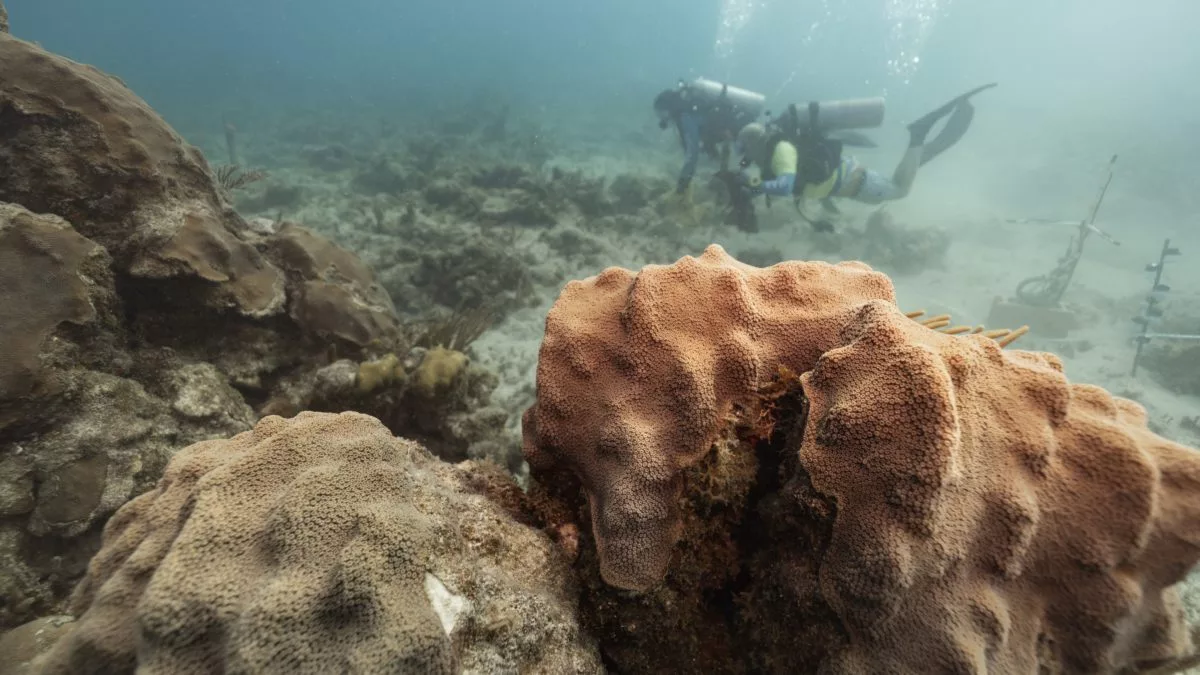Scientists have discovered that audio recordings of healthy coral reefs may help attract free-swimming coral larvae to damaged ones. The finding could be a major step toward preserving the world's coral reefs, an estimated 25% of which have died out in the last 30 years.
Although the reef structures formed by coral polyps are immobile, the polyps themselves swim through the water while still in their larval state. Eventually, when they find a place they like, they latch onto a rock or other hard surface and start secreting the calcium carbonate that will ultimately form a reef.
One approach to restoring decimated reefs involves attracting larvae to them, in hopes that the creatures will settle there and rebuild. The question is, what does attract the larvae?
Drawing on previous research, scientists from the Woods Hole Oceanographic Institution (WHOI) set out to see if sound might be a major factor. Although we may not think of thriving reefs as noisy places, the fish living in them produce a variety of vocalizations, plus certain shrimps make a crackling sound.
For the study, which was carried out in the US Virgin Islands, a WHOI team led by Nadège Aoki and Aran Mooney started out by obtaining 12-hour "soundscape" recordings of a healthy reef called Tektite. They then set up solar-powered underwater speakers at Tektite and two other more degraded reefs, Cocoloba and Salt Pond.
Next, they placed captured Porites astreoides coral larvae in screened cups that water could flow through, and that each contained a clay stilt on which the larvae could settle if they felt so inclined. Those cups were then zip-tied to rebar stakes hammered into the sand at each reef, at distances of 1, 5, 10 and 30 meters (3.3, 16.4, 32.8 and 98.4 ft) from the speakers. Two cups were attached to each stake, for a total of eight cups per reef.

For two separate three-night periods, the soundscape recordings were played back at the degraded Salt Pond reef, but not at Cocoloba or Tektite. When the cups were subsequently examined at the end of each period, it was found that the Salt Pond larvae settled on their clay stilts at rates 1.7 to seven times higher than those of the other reefs.
The Salt Pond cups located 5 meters from the speakers were the most successful, although even the cups that were set 30 meters away did better than their counterparts at Tektite and Cocoloba.
"The fact that settlement is consistently decreasing with distance from the speaker, when all else is kept constant, is particularly important because it shows that these changes are due to the added sound and not other factors," said Mooney.
And yes, it does seem strange that Tektite itself wasn't as attractive as an "inferior" reef that used recordings of Tektite's soundscape. However, between the time that the recordings were made (2013) and the time that they were played back (2022), Tektite suffered storm damage, coral bleaching, and coral disease.

"What we’re showing is that you can actively induce coral settlement by playing sounds,” said Aoki. "You can go to a reef that is degraded in some way and add in the sounds of biological activity from a healthy reef, potentially helping this really important step in the coral life cycle."
The research is described in a paper that was recently published in the journal Royal Society Open Science.





